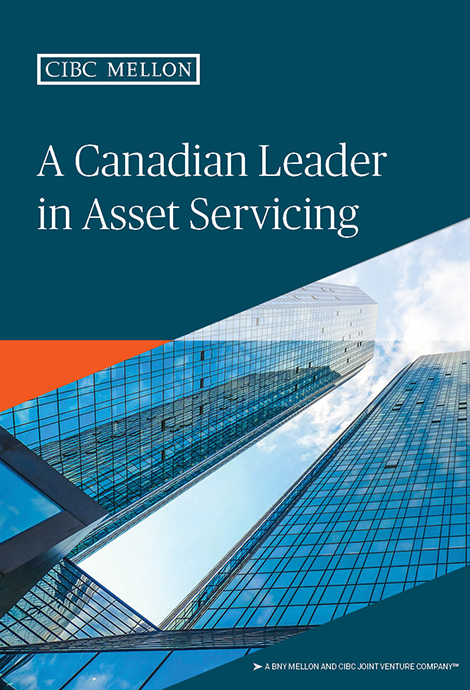When it comes to investing across borders, maintaining a best-in-class operating model is central to the success of any financial services firm – but that’s only part of the picture. A sound strategy, an eye for risk management, and a company’s culture—especially its people—are just as important in the long term. In Canada and globally, ensuring these elements complement each other is key as digitisation continues to disrupt the banking world. Disruption is healthy; it gets us out of our comfort zones and makes us conscious of the competitive landscape, especially as organisations continue to move toward connection, digitisation and technology. From internal processes and employee education to vendor management, businesses are expected to remain vigilant and work to continuously improve the controls and security measures in place to protect themselves and adapt to the rapid technological advancements. Persisting through the tide of digital disruption reminds us that we must continuously innovate and evolve so that we can best support our clients.
Across the globe, institutional investors are focusing on their core competencies – the areas where they can add genuine value to their clients and cross-border operations. At the same time ability to adopt new and transformative technologies at an accelerated pace has enabled the creation of new business models. This is creating new and divergent requirements for service providers. Finding efficiencies and reducing costs are significant factors, though clients are also looking for ways to improve their operating models that add value and are sustainable. Leveraging the right technology in order to drive innovation forward is a key factor in improving efficiency – and the attractions of outsourcing processes to providers with suitable scale, focus and resiliency are considerable.
The challenge for any financial institution is to drive innovation while delivering on all the day-to-day tasks that keep our businesses running. It is vital to recognise the importance of resiliency and data security. Canada’s regulatory regime itself is relatively complex, with a number of industry self-regulatory bodies, provincial regulators and federal regulators. Clients want to know that firms are reacting to unplanned challenges in a prompt, organised and effective manner.
Here is our approach for delivering transformation to run a simpler, smarter, safer firm – and to help our clients achieve the same goal:
I) Focus on placing the client experience at the centre of everything we do
Institutional investors are increasingly global and digitally savvy; the trends in their personal lives—where they have access to real-time information that’s pushed to them instead of having to retrieve it—influence what they expect of their institutional bank. Strive to be proactive, anticipate clients’ needs, and provide them with data and insights at the moment they need them. While data has never been so abundant or as easy to access, leveraging that data remains a challenge. Clients want to leverage data and analytics to improve investment and earnings outcomes. This requires access to timely data in the manner they want to receive it. In Canada, financial market participants continue to seek efficiencies and stronger controls through operational transformation, which includes exploring new opportunities to capture and further engage with emerging data trends in collaboration with service providers.
While clients are evolving their expectations and demands, it is important to stay ahead of their needs. Improving client experience can include:
Supporting clients as they launch additional complex products and solutions, including expanding into credit, real estate and other alternative investment solutions
Enabling faster account openings
Improving access and speed to new markets
Making it easier to do business around the globe by identifying network partners that are equally advanced in their local markets
II) Choose the right technologies
Digital technology is at the core of everything we do. In many ways, technology doesn’t just enable the business; it is the business.
Keep the client experience at the heart of your technology discussions. Be aware that clients differ in how they prefer to interact with you, so a one-size-fits-all solution will not always satisfy their requirements. You must develop solutions which are both adaptable and scalable.
Emerging technologies are also enabling efficiency across internal operational processes at an exponentially higher rate. Take the automation of the end-to-end reconciliation process, for instance. Machine learning can quickly classify many types of breaks, route them to the appropriate downstream systems, and then through rules-based engines, automatically resolve them, all without human intervention.
Investing in digital, data and analytical capabilities across the business brings valuable, back-office data to empower the front office. This approach also enables clients to securely capture and process data from a wide array of sources and vendors to turn into meaningful insights.
Key focus areas to consider when modernising technology and processes:
Identify ways to move from manual processes to real-time automation
Enhance data management capabilities and platforms
Optimise the operational workflow with digital tools and experiences
Accelerate insights through enhanced data and analytics
III) Drive a disciplined approach to get it right for clients
As in many other aspects of the business, the world of Canadian fund administration is seeing an increased focus on digitalisation of processes and products in keeping with the themes of scale, risk mitigation, efficiency and cyber risk management. By digitising processes, an organisation can become more nimble, much the same way the smallest fintech can.
In order to achieve those results, you must have internally and externally strong program management, robust governance, and disciplined execution skills. Go deep and know the details. Fostering a sustainable risk culture and demonstrating powerful resiliency is a staple of success in the evolving technological landscape.
An organisation’s risk culture includes the attitudes and behaviours enforced across the scope of the company relative to its risk appetite, and its ability to carry out its business activities while understanding and effectively accounting for risks inherent in those activities.
One of the most prominent and yet underrated risks in an organisation is cyber risk. Cybersecurity is the practice of protecting systems, networks, and programs from digital attacks.
As today’s businesses get more digitised, it’s imperative to have proper processes to protect the usability, reliability, integrity and safety of the network and data.
What cybersecurity questions should we be asking ourselves to instil trust in our cybersecurity measures?
What measures do we have in place to protect data? What policies?
How do we secure the transmission of data?
How do we keep employees informed and prepared of updated, cybersecurity procedures, and similar matters?
What are our organisation’s critical dependencies, technologies and systems?
IV) Implement strong vendor management oversight
A good vendor management policy includes direction and guidance to ensure that outsourcing risks are identified and managed prudently, consistently – in compliance with laws and regulations, and addressing the key requirements in the selection, classification, performance measurement, purchasing standards, negotiation, and management of vendors. Documentation should hold vendors accountable to standards for performance with regular due diligence reviews and appropriate reporting requirements. For vendors whose services are deemed critical, including technology-related vendors, there should be additional controls and monitoring to provide further assurance that additional risks related to the vendors – for example, business continuity, cybersecurity, and risks related to the supply chain – are being managed properly.
When responding to risks related to internet-enabled services, an integral step is to appropriately review service providers. While this is an important component of vendor selection and onboarding, it is imperative to continue to review vendors throughout the duration of the relationship. There are multiple ways vendors can provide assurance that your data is protected: by having multiple redundant data centres, having in place detailed disaster recovery planning and by setting high standards for information security.
What vendor management questions should we be asking to build a robust vendor management infrastructure?
What are our regulatory, board and policy requirements?
What are the expectations of stakeholders like clients, investors and pensioners?
How have we worked to meet our stakeholders’ expectations that those vendors are prepared?
Cultivate a motivated, diverse workplace
Canadian institutional investors know that a diverse workforce enhances the client and employee experience. Therefore, creating a meaningful, fulfilling and positive employee experience is as integral as powerful client experience. The secret to developing an empowered workforce that is accountable, highly-skilled, and client-focused goes back to ensuring that you have the right culture. While we’re constantly evaluating its merits, employees across our Canadian and global enterprise are mindful that emerging technology is not a means to an end; it is a way to drive innovative solutions for clients. To be successful, start with people and look through their lenses. Take your best talent and make them a part of your most significant initiatives so they have ownership of the processes. It’s important to create an environment where employees can connect, develop and engage in meaningful work in order to achieve success.
Conclusion
The digital age has certainly changed the way the world does business, and one key factor of change surrounds emerging new technologies. Technological innovation is bringing many benefits and opportunities. Yet there is also pressure from regulators to provide assurances that processes are in place to mitigate the effects of unexpected disruptions and threats on critical services.
In Canada and around the world, clients want to leverage data and analytics to improve investment and earnings outcomes. Finding efficiencies and reducing costs are significant factors, though clients are also looking for ways to improve their operating models that add value and are sustainable. In order to be client and employee centric, companies should invest in a leadership culture of empowerment, innovation and the pursuit of relevance.



